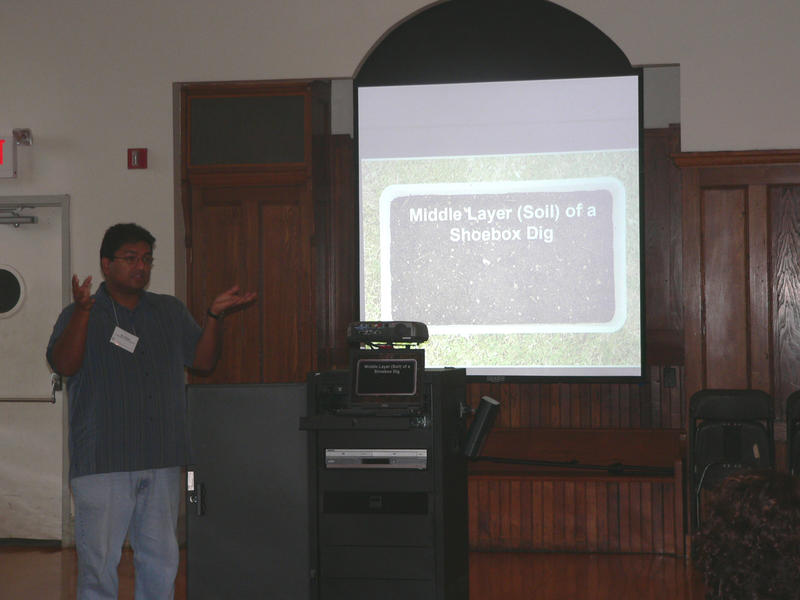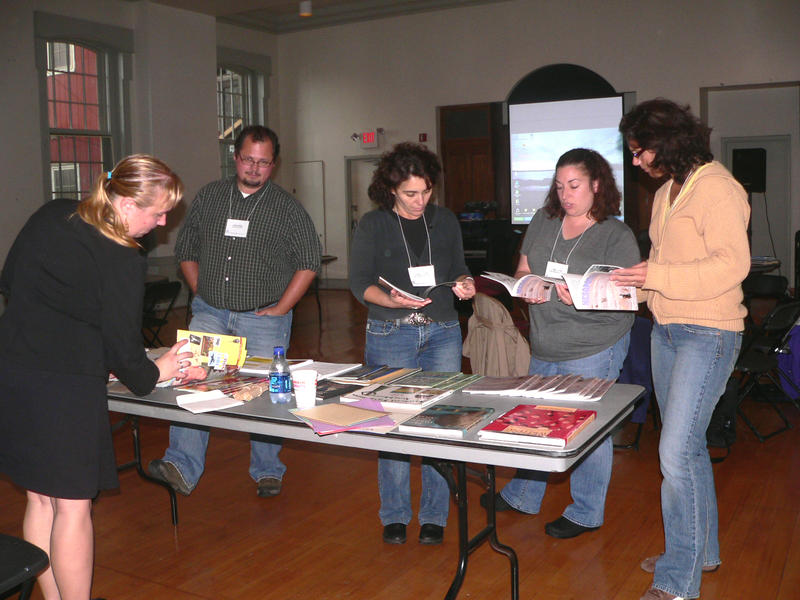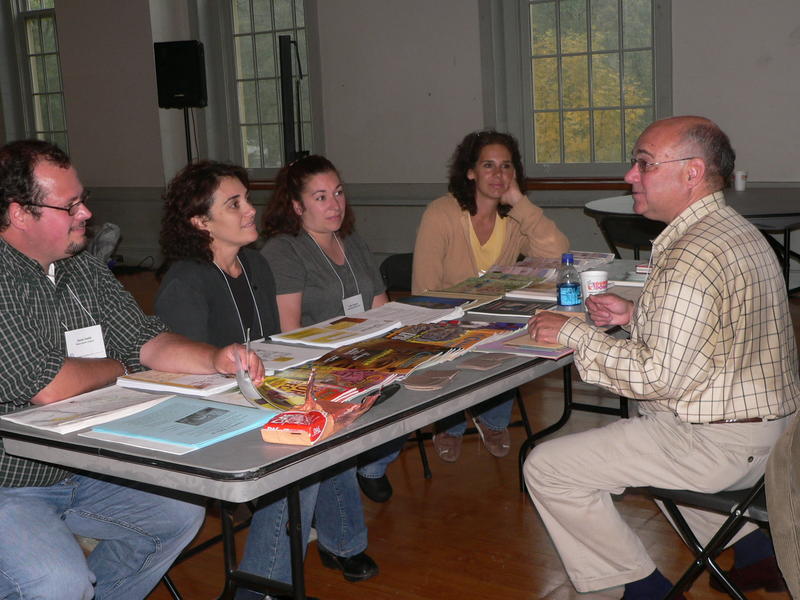November 23, 2010
by Ben Thomas



This article is reprinted from the Spring 2010 National Social Studies Supervisors Association newsletter, NSSSA Leader.
In my line of work, I often meet people who inform me that as kids they wanted to be archaeologists (but grew up and decided to find more practical pursuits). These folks are intrigued by the past. To them the idea of uncovering clues and using them to explain ancient behavior is fascinating. Combining this intellectual exploration with the physical “adventure” of archaeological discovery—as personified by Indiana Jones and set in exotic locales around the world—offers an almost irresistible lure to the past. The fascination with the past is not limited to adults; it extends to children who are infinitely curious about how ancient people lived and behaved. Children often want to know the more prosaic details of ancient life—what did people eat? Did the kids have toys? Where did they go to the bathroom?
While children are fascinated with ancient lives and objects, their teachers often do not have the right tools to effectively integrate archaeology into the classroom. In 2004, the Archaeological Institute of America (AIA) initiated a series of workshops that presented ways in which teachers could create meaningful small-scale archaeologically themed projects for the classroom. In these workshops, archaeology was presented as an inter-disciplinary and cross-curricular teaching and learning tool. Workshop leaders argued that archaeological information could be used to enhance the study of history, geography, and economics (not to mention science, math, and the visual arts). It lent itself to the creation of hands-on activities and programs that helped a student learn about the past and it people through physical engagement with the material—a shoebox dig, an artifact classification exercise, an ancient technology workshop, etc. Archaeology, we argued, was a great entry point into an inter-disciplinary world of knowledge that required creativity, logic, and observation.
The teachers’ workshops were designed to be 1) informative—teaching the importance of preserving and understanding cultural heritage; 2) engaging—providing hands-on activities that allow the participants to act and think like archaeologists; 3) cross-curricular—the content was designed to bring together skills required in science, social science/history, arts, language, and math; and 4) fun. In addition to teaching students about archaeology, the projects presented at the workshops were designed to teach critical-thinking and hypothesis-testing; they modeled scientific approaches in new and different ways. Our hope was that the workshops would provide teachers with the tools to communicate more effectively issues of cultural identity and heritage to their students and provide them with the resources needed to make the study of the past and ancient civilizations interesting and enjoyable.
Using archaeology as an inter-disciplinary and cross-curricular teaching and learning tool is possible because of the applicability of archaeological data across a wide spectrum of scientific disciplines. Almost every aspect of human behavior produces material remains that can be examined. An archaeologist, therefore, can study all facets of ancient life (subsistence, technology, science, art, economics, ideology, etc.) and create a complex narrative of the past. The inter-disciplinary nature of the data makes it easy to incorporate archaeological material in state-mandated curricula, as they touch on several topics already in the curriculum. I have met teachers who use archaeology in history, ancient civilizations, science, math, visual arts, creative writing, and even theater arts.
When taught effectively to children, archaeology is a powerful tool that can promote deep, meaningful learning about other cultures as students step into the shoes of people from different times and places. Interpretations of archaeological data are closely tied to the cultural context of the people being studied. As one uncovers data, he or she learns how the objects intersected with the values and traditions of an ancient culture. This is useful in highlighting the differences (or similarities) amongst the various cultures. Since the techniques of archaeological research and analysis are not confined to one place or time, people can apply their skills to studying cultures from across the globe and throughout history.
Fascination with the past is not a new phenomenon. Maya kings justified their positions of power by invoking ancestral rights and connections to ancient (and often mythical) rulers. Europeans in the Renaissance sought out and purchased ancient objects especially from the Classical world. Among modern Americans traveling abroad, visiting archaeological and historical sites I the third most popular activity (shopping and eating at restaurants are one and two). Today we even include the study of ancient cultures in our curriculum. Here are a few reasons we continue to be intrigued by the past:
Archaeology provides us with the tools to examine and understand the past. Ancient behavior is reconstructed through the collection of material evidence, the creation of hypotheses, and the testing of these hypotheses against the collected data. Careful observation, logical procedures, inferential thinking, and deductive reasoning are the hallmarks of archaeological interpretation. Therefore, while archaeology uncovers the mysteries of the past, it also provides the tools and methodology needed to find the answers.
It is increasingly important to understand the relationship among archaeology, preservation, and the vast modern forces of change, such as urban development, climate change, and military conflict, as we see not just occasional remains, but also whole sites becoming lost or irreparably damaged and monuments and objects vandalized and looted. Meanwhile, many counties—proud of their cultural heritage—demand the return of valued objects from foreign museums. Archaeology is highly relevant to understanding the issues behind such headlines in today’s world.
The AIA continues to become more deeply involved with archaeological education. If we want to preserve knowledge of our world’s past for the future, it is essential to reach the youngest among us and instill in them an interest in archaeology and a respect for past cultures. We are currently working on several initiatives, including a website for kids and an archaeologically-themed after-school program, which we hope will enhance children’s understanding of the past and create in them the desire to preserve the past for the future.
Ben Thomas is a Mesoamerican archaeologist who studies ancient Maya settlements and architecture. He received his Ph.D. from Boston University after several years of fieldwork in the jungles and swamps of Belize and Guatemala. Currently, Ben is the Director of Programs for the AIA and an Assistant Professor in the Liberal Arts program at the Berklee College of Music where he teaches Mesoamerican art and archaeology.